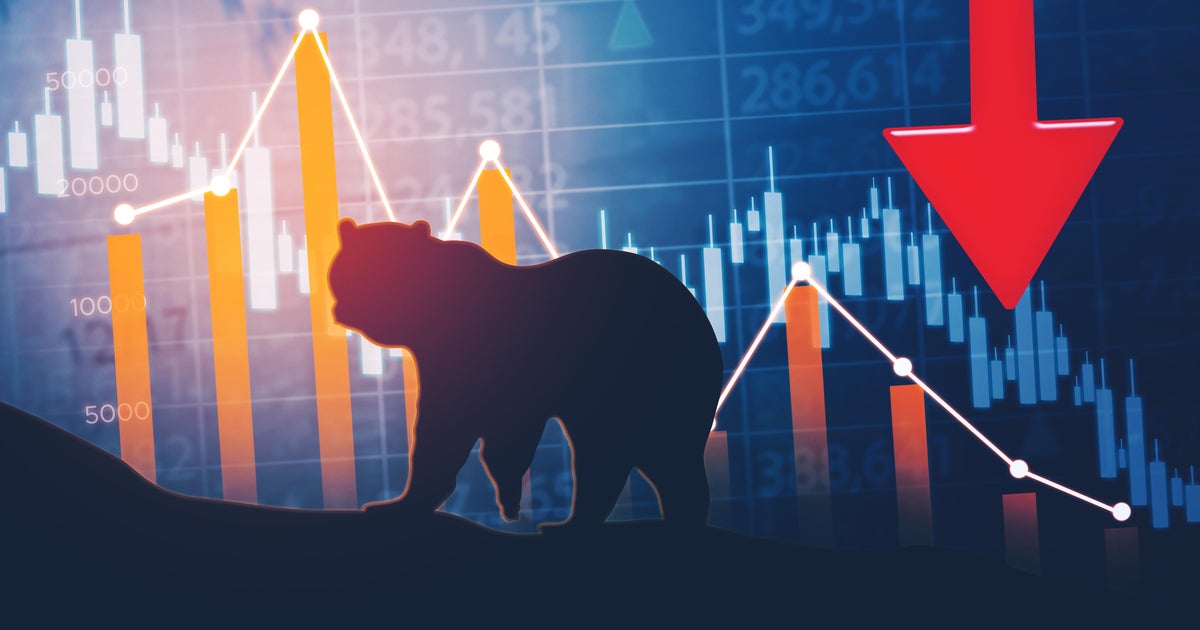Wall Street could soon be in the claws of another bear market as the Trump administration’s tariff blitz fuels fears that the added taxes on imported goods from around the world will sink the global economy.
The last bear market occurred in 2022, but the current decline is more similar to the sudden, turbulent bear market of 2020, when the benchmark S&P 500 index tumbled 34% in a one-month period, the shortest bear market ever.
A bear market is a Wall Street term used to describe a market downturn when a stock index, such as the S&P 500 or the Dow Jones Industrial Average, has fallen 20% or more from a recent high for a sustained period of time.
Because bears hibernate, they are used to describe a stock market that’s retreating. In a bull market, by contrast, stocks surge, because bulls are known to charge.
The S&P 500, Wall Street’s main barometer of health, was down 1.2% in Monday afternoon trading. It’s now 18.4% below the all-time high it set on Feb. 19.
The Dow industrials fell 1.8%, and the tech-heavy Nasdaq composite, which already was in a bear market, dropped 0.9%.
The most recent bear market for the S&P 500 ran from Jan. 3 to Oct. 12 in 2022.
Fear and uncertainty
President Trump’s global trade war has ratcheted up fear and uncertainty on Wall Street over how businesses and consumers will respond.
Mr. Trump followed through on tariff threats issued last week by declaring a 10% baseline tax on imports from all countries, and higher tariff rates on roughly 90 nations that run trade surpluses with the United States.
Global markets cratered the next day, and the sell-off deepened after China announced it would retaliate with tariffs equal to the ones from the U.S.
Tariffs cause economic pain in part because they’re a tax paid by importers, that businesses typically pass along to consumers, causing prices to rise.
Import taxes can also cause economic damage by complicating business decisions, including which suppliers to use, where to locate factories and what prices to charge. Such uncertainty can cause companies to delay or cancel investments that help drive economic growth.
The tariffs come at a time when the U.S. economy is already showing signs of slowing. Markets are also worried that tariffs could fuel inflation, which recently ticked higher.
On average, bear markets have taken 13 months to go from peak to trough and 27 months to get back to breakeven since World War II. The S&P 500 index has fallen an average of 33% during bear markets in that time. The biggest decline since 1945 occurred in the 2007-2009 bear market, when the S&P 500 fell 57%.
History shows that the faster an index enters into a bear market, the shallower it tends to be. Historically, stocks have taken 251 days, or more than eight months, to fall into a bear market. When the S&P 500 has fallen 20% at a faster clip, the index has averaged a loss of 28%.
The longest bear market lasted 61 months and ended in March 1942. It cut the index by 60%.
Generally, investors look for a 20% gain from a low point as well as sustained gains over at least a six-month period to determine the end of a bear market. It took less than three weeks for stocks to rise 20% from their low in March 2020.
Money moves
While market drops can fuel panic among investors, financial advisers suggest weathering the economic ups and downs for long term gains.
Investors who dump stocks could stem the bleeding, but would be locked out of potential gains down the road.
Some of the greatest market gains have occurred either during, or just after a bear market has ended. That includes two separate days in the middle of the 2007-2009 bear market when the S&P 500 surged roughly 11%, as well as leaps greater than 9% during and shortly after the monthlong bear market in 2020.
Advisers suggest investing in the stock market for the long run, instead of using it as a place to park money one might need to quickly withdraw. The S&P 500 has rebounded from every one of its previous bear markets and risen to new highs.


